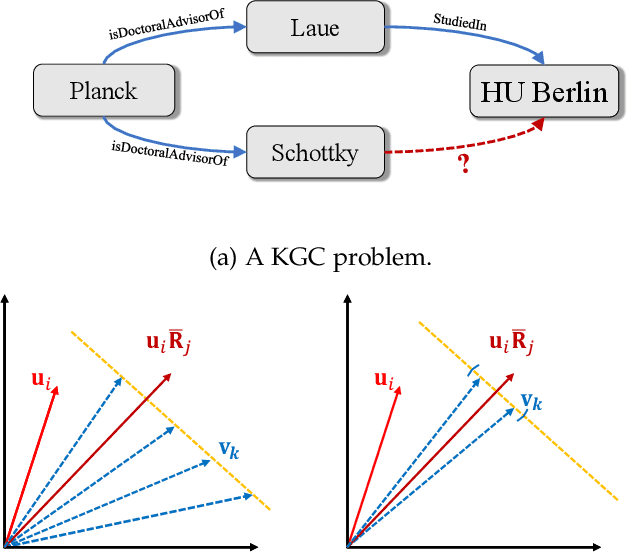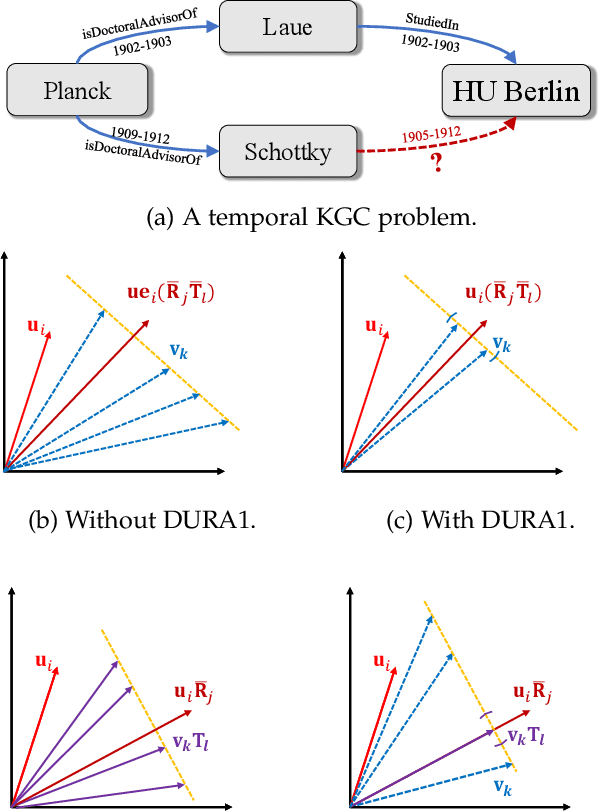Duality-Induced Regularizer for Semantic Matching Knowledge Graph Embeddings
Paper and Code
Apr 06, 2022



Semantic matching models -- which assume that entities with similar semantics have similar embeddings -- have shown great power in knowledge graph embeddings (KGE). Many existing semantic matching models use inner products in embedding spaces to measure the plausibility of triples and quadruples in static and temporal knowledge graphs. However, vectors that have the same inner products with another vector can still be orthogonal to each other, which implies that entities with similar semantics may have dissimilar embeddings. This property of inner products significantly limits the performance of semantic matching models. To address this challenge, we propose a novel regularizer -- namely, DUality-induced RegulArizer (DURA) -- which effectively encourages the entities with similar semantics to have similar embeddings. The major novelty of DURA is based on the observation that, for an existing semantic matching KGE model (primal), there is often another distance based KGE model (dual) closely associated with it, which can be used as effective constraints for entity embeddings. Experiments demonstrate that DURA consistently and significantly improves the performance of state-of-the-art semantic matching models on both static and temporal knowledge graph benchmarks.
 Add to Chrome
Add to Chrome Add to Firefox
Add to Firefox Add to Edge
Add to Edge